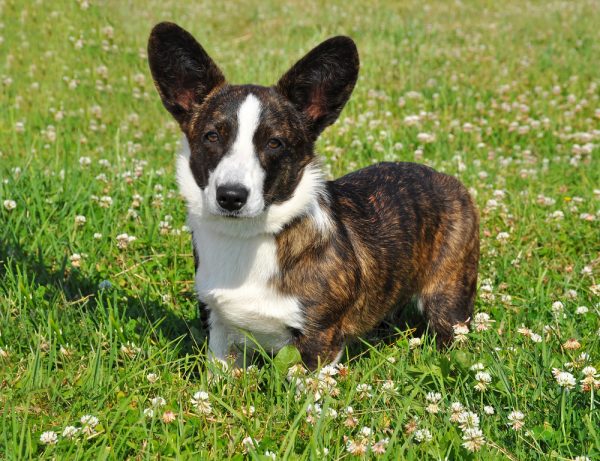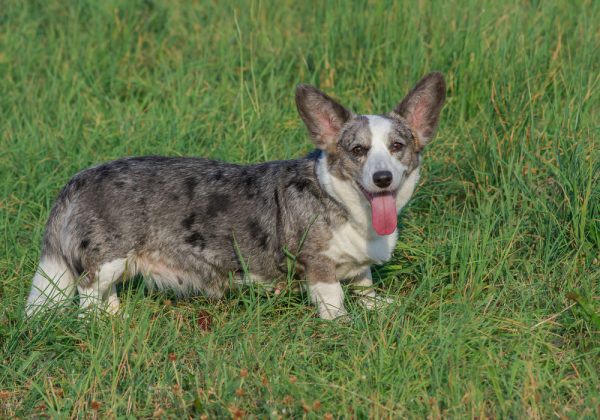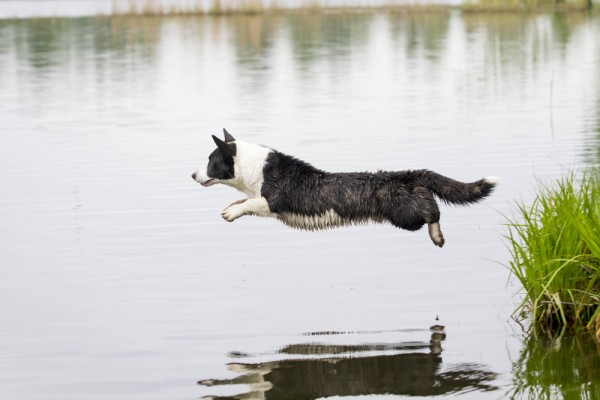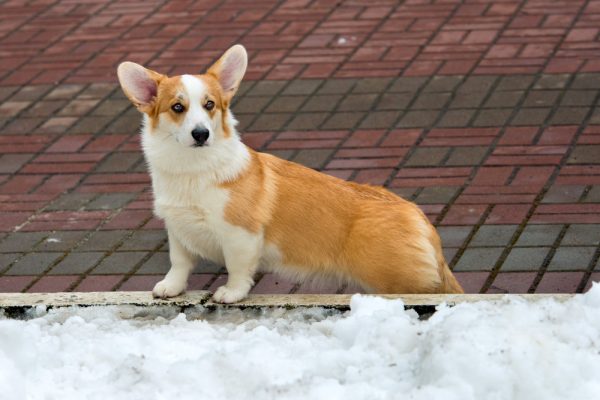Yes, he is a Welsh Corgi, thank you. No, we did not forget to dock his tail. Really. No, he is not crossed with an Australian Shepherd, German Shepherd, or any other breed. I get it, your aunt’s Corgi is red and white and has smaller ears. This is not your aunt’s Corgi.
This is not your average Corgi, either — that’s because the Cardigan Welsh Corgi is the far less popular, less recognized Corgi. Most everybody knows the Pembroke Welsh Corgi — the Queen’s dogs. But if you want to stand out, you need to go Cardigan.

Interesting facts about the Cardigan Welsh Corgi
- The Cardigan is sometimes called the “Corgi with a tail,” but in reality the Cardigan differs from the Pembroke in many more ways than the long tail. The breed is larger overall, has much heavier bone, and is longer in body. And he has much larger ears, and his front feet point out more to either side. Plus he comes in several colors and patterns that are never seen in purebred Pembrokes, including merle and brindle patterns. He’s like a super-Corgi!
- They come from Wales. In case that wasn’t obvious. But not so obvious is that Corgis are an ancient breed, or at least family type, centuries, maybe even maybe thousands of years, old. Ancestors probably came from central Europe to Wales.
- Early ancestors may have included short-legged turnspit dogs, which turned spits in kitchens. These in turn may have also been related to the teckel family of dogs, which is basically the Dachshunds.

- At first they were used for everything, including guarding the farm and hunting. They were especially favored for going in front of the herd and clearing the way of predators. But the Corgi found his forte driving, rather than herding, cattle, scattering them across the lands. This helped tenant farmers use more of the common grounds. The breed probably had an influx of herding dog blood to help.
- The original Cardigans were from Cardiganshire, South Wales.
- When Viking invaders came to the area 1000 years ago, they introduced a spitz-type dog that crossed with some of the corgis. Those crosses went on to become the Pembrokes. The Cardigans remained true to their original type.
- They were supposed to measure a Welsh yard (slightly longer than an English yard) from nose to tail-tip. In some places they were called the yard-long dog or Ci-llathed.
- “Cor-gi” may be derived from “dwarf dog” in Welsh.

- Pembroke and Cardigan Welsh Corgis were considered one breed for registration and showing purposes in England from 1925 until 1934, despite the fact that they actually came from different backgrounds.
- The first Cardigans came to the United States in 1931.
- They were initially AKC registered as Welsh Corgis (Cardigan), but the name was changed to Cardigan Welsh Corgi in 2006.
- The Cardi is currently the 76th most popular AKC breed, pretty much holding steady.

- The breed has been shown at the Westminster dog show since 1936, but only one time, in 2014, has one won the Herding group there. The dog who won was named GCH Riverside Telltail Coco Posh. Her handler reported she kept her occupied while awaiting Best in Show by playing Frisbee with her in the hotel hallway!
- With all the royal to-do about Pembrokes, Cardigans can’t help but feel like the redheaded stepchild when it comes to celebrity owners. Among the few who have one is Alton Crawford Brown, TV personality, food show presenter, author, actor, and cinematographer.





